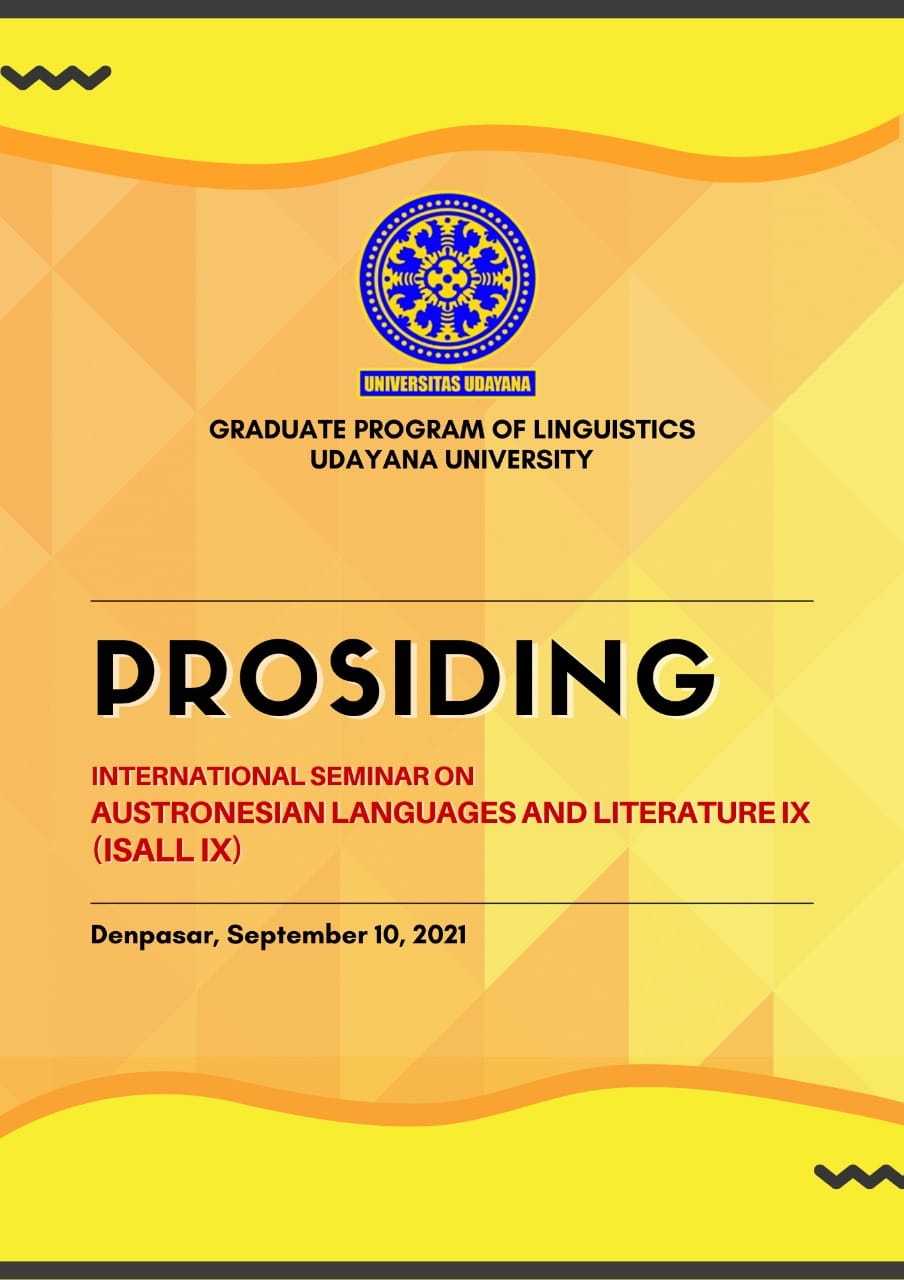Dialog antar Tokoh dalam Pertunjukkan Calon Arang
Abstract
Calon Arang was originally in the form of literary works in various genres, such as prose, kidung, geguritan, speech (tatwa) and later appeared in the Kakawin Calon Arang and the novel of Calon Arang in Balinese. In the context of the art and culture of Calon Arang, it has been used for the theme of the Bali Arts Festival and the context of art was used in the play of Calon Arang. This is where a broad understanding of the story (text) of Calon Arang is found in several episodes such as Katundung Ratna Mangali, Madusang-dusangan, the Patih Madri episode, and the war between Mpu Baradah and Calon Arang which ends with the two characters being the embodiment of Rangda and Barong. In the Calon Arang performance, whether it's arja, prembon, or dance drama, there are differences in the dialogue language, such as the Calon Arang character and the character from the upper class using Old Javanese language. Meanwhile, the parekan figures such as Kartala (punakawan) are using Balinese language. The complete study of the dialogue in Old Javanese and Balinese language between the characters in the performing arts will be presented in this paper
References
Dibia, I Wayan, 2012, “Bahasa Jawa Kuna dalam Seni Pertunjukan di Bali Dalam Sastra Jawa Kuna, Refleksi Dulu, Kini dan Tantangan ke Depan”, ed Suastika dan Sukartha, Denpasar : Cakra Press.
Mardiwasito, L. dan Herimurti Kridalaksana, 1984, Struktur Bahasa Jawa Kuna, Ende-Flores, Nusa Indah.
Widyatmarta, Sunan, 1958, Adiparwa I dan II, Yogyakarta, Toko Buku Spring.
Zoetmulder, PJ dan IR Poedjawijatna, 1987, Bahasa Parwa I, Yogyakarta, Gadjah Mada University Press.
Zoetmulder, PJ dan Robson, 2006, Kamus Jawa Kuna – Indonesia (Penerjemah Darasuprapto dan Sumarti Suprajitno), Jakarta : Gramedia Pustaka Utama.
Zoetmulder, PJ, 1994, Sekar Suwawan Bunga Rampai Bahasa Jawa Kuna. Yogyakarta : Gajah Mada University Press.


